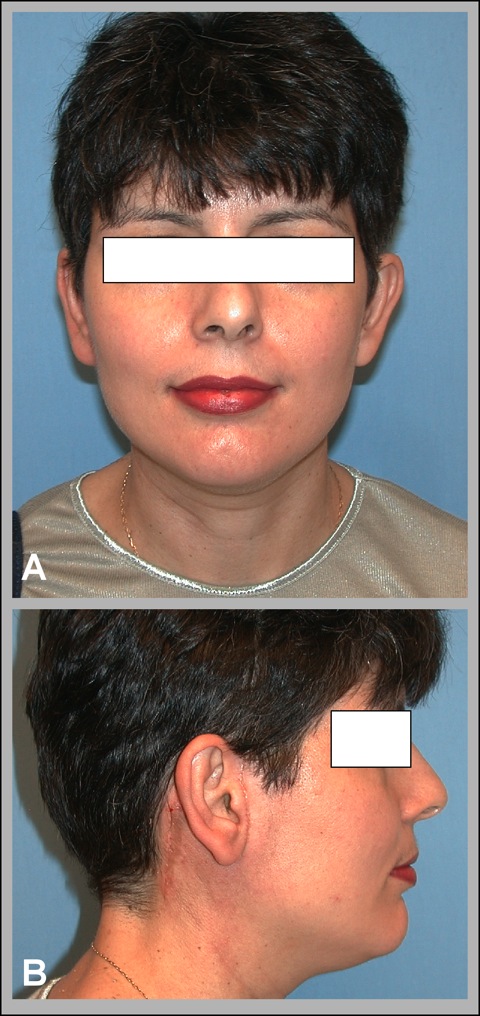Repair of Nasal Saddle Nose Deformities
A saddle nose occurs when the central support of the nose weakens and the nose begins to collapse. Dr. Pribitkin has long been interested in correcting the saddle nose deformity and has recently published a paper highlighting his approach to this repair.
For example, this patient undergoes repair with a wedge-shaped cartilage graft (B) to restore her nasal contour.
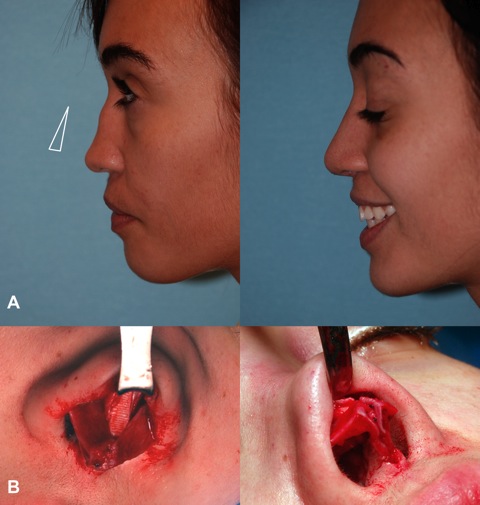
More complex deformities require the use of rib cartilage grafts as seen below.
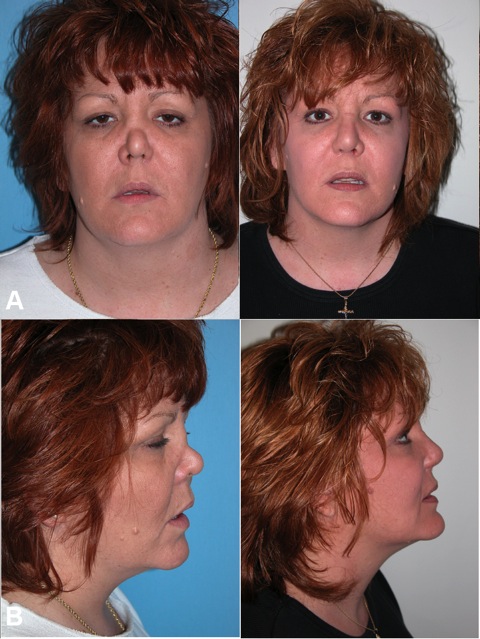
And some severe deformities require that skin be brought from the forehead (C) to cover a cartilage rib graft and titanium framework.
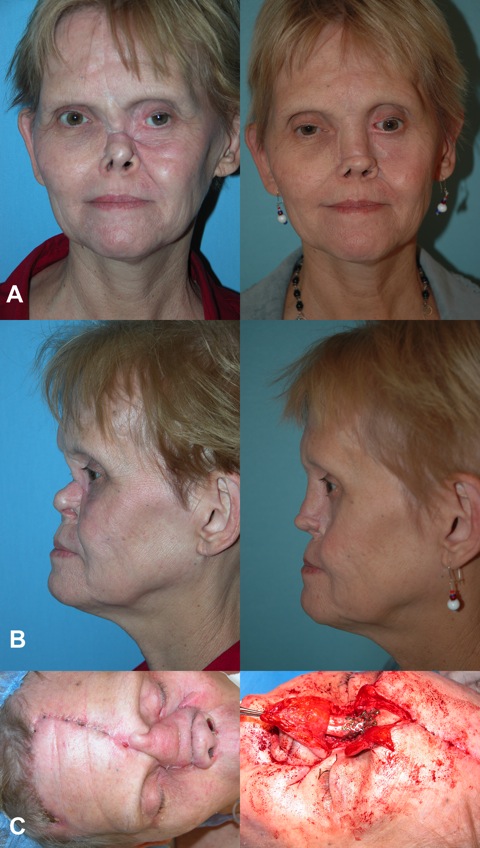
Repair of Nasal Septal Perforations
Holes in the nasal septum may arise from many different causes and present a reconstructive challenge to the facial plastic surgeon. Few practitioners attempt these repairs, because they are commonly closed successfully in less than 50% of cases. Dr Pribitkin has performed over 100 of these repairs in holes up to 3 cm in size with a greater than 85% success rate. He has pioneered the use of an extracellular matrix graft made from pig small intestinal submucosa to regenerate the missing septal cartilage.
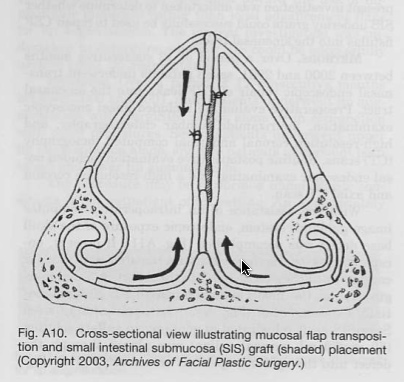
Moreover, in some cases, he has not only repaired the septal cartilage defect, but also improved the patient’s nasal appearance.
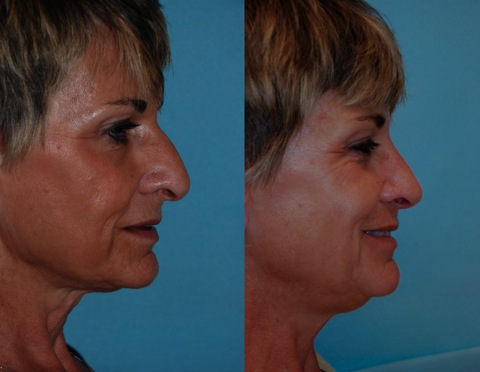
Repair of Traumatic Injuries
Although common, nasal fractures can prove challenging as seen in the following cases:
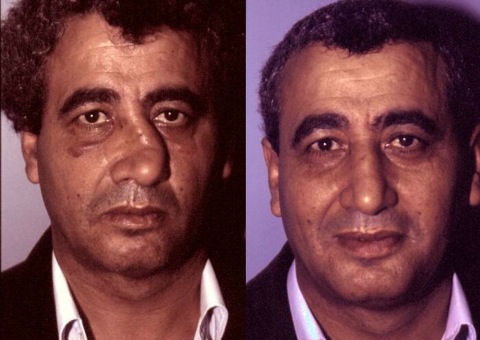
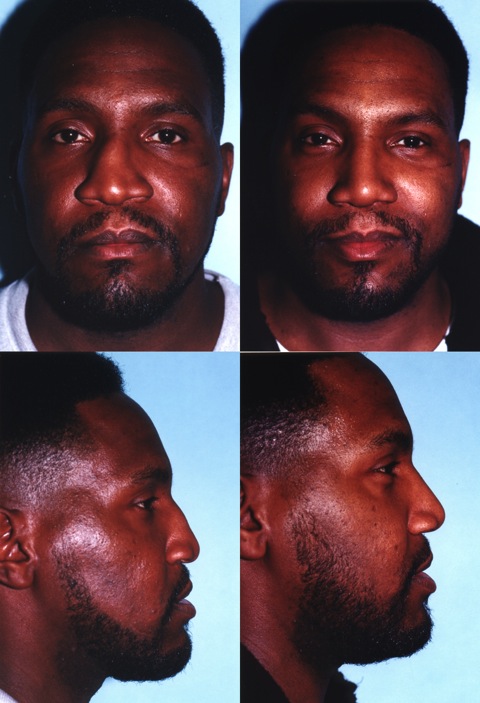
Dr. Pribitkin and his colleagues at Jefferson employ the most-up to date 3 dimensional imaging technology to plan their repairs. This 3-D Cat Scan demonstrates extensive fractures involving a patient’s cheek, orbit, nose and jaw.
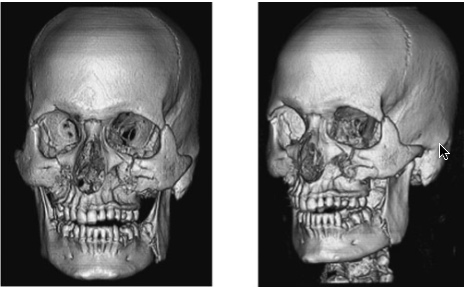
This patient did well following extensive surgery by Dr. Pribitkin and his colleague Dr. Jurij Bilyk, an oculoplastic surgeon at the Will Eye Institute with whom Dr. Pribitkin has worked for over fifteen years.
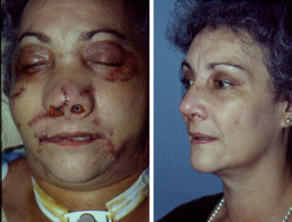
Reconstruction of Parotid Defects
Patients undergoing parotid surgery often receive disfiguring incisions. Moreover, removal of the parotid gland can result in a severe facial depression and asymmetry. If the salivary nerves severed during the surgery regrow and mistakenly connect to the sweat glands in the skin, patients will sweat on one side of the face whenever they are eating. Dr. Pribitkin has pioneered a procedure whereby these tumors are approached through a hidden facelift incision (A). Fat is harvested from around the belly button (B), and after the skin and underlying fascio-muscular flap is elevated (C), the tumor can be removed. The harvested fat fills the space resulting from the removal of the tumor and the redraped fascio-muscular flap (D) prevents the severed salivary nerves from regrowing incorrectly. Patients return home the day after surgery when their surgical drains (E) are removed.
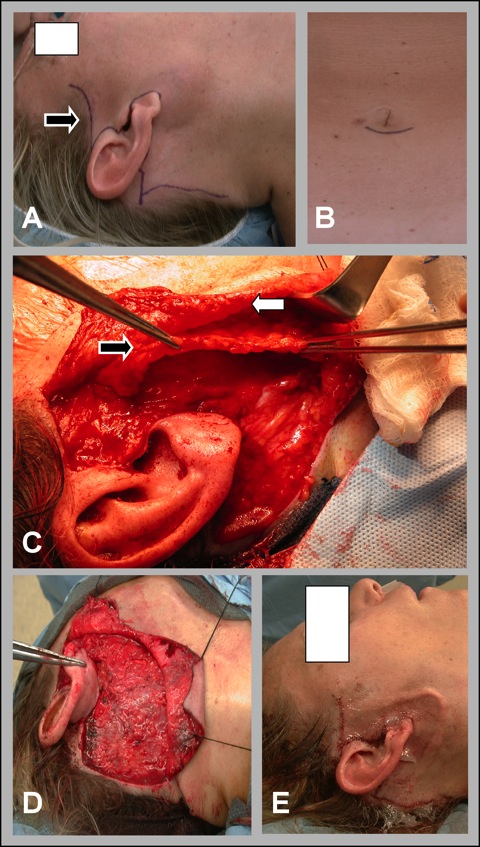
Here the patient demonstrates excellent facial symmetry following surgery (A) and a well camouflaged scar.
